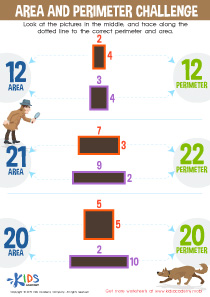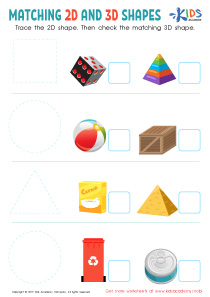Shape Recognition Fractions of Shapes Worksheets for Ages 7-9
9 filtered results
-
From - To
Discover our engaging Shape Recognition Fractions of Shapes Worksheets, designed specifically for children aged 7-9! These worksheets provide a fun and interactive way for young learners to explore fractions through shape recognition. Each activity encourages students to identify and categorize different shapes while understanding the concept of fractions, such as halves, thirds, and more. With vibrant visuals and stimulating exercises, kids will enhance their math skills while developing critical thinking abilities. Perfect for classroom use or at-home learning, these worksheets lay a strong foundation in both geometry and fractions. Get ready for an exciting math adventure that boosts confidence and promotes learning!
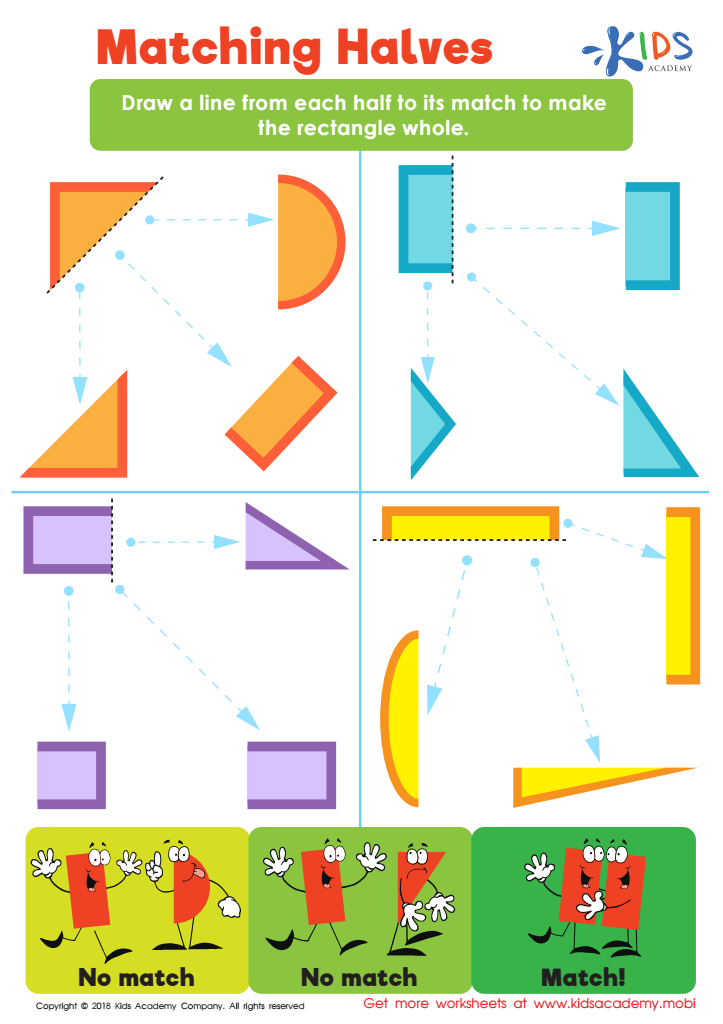

Matching Halves Worksheet
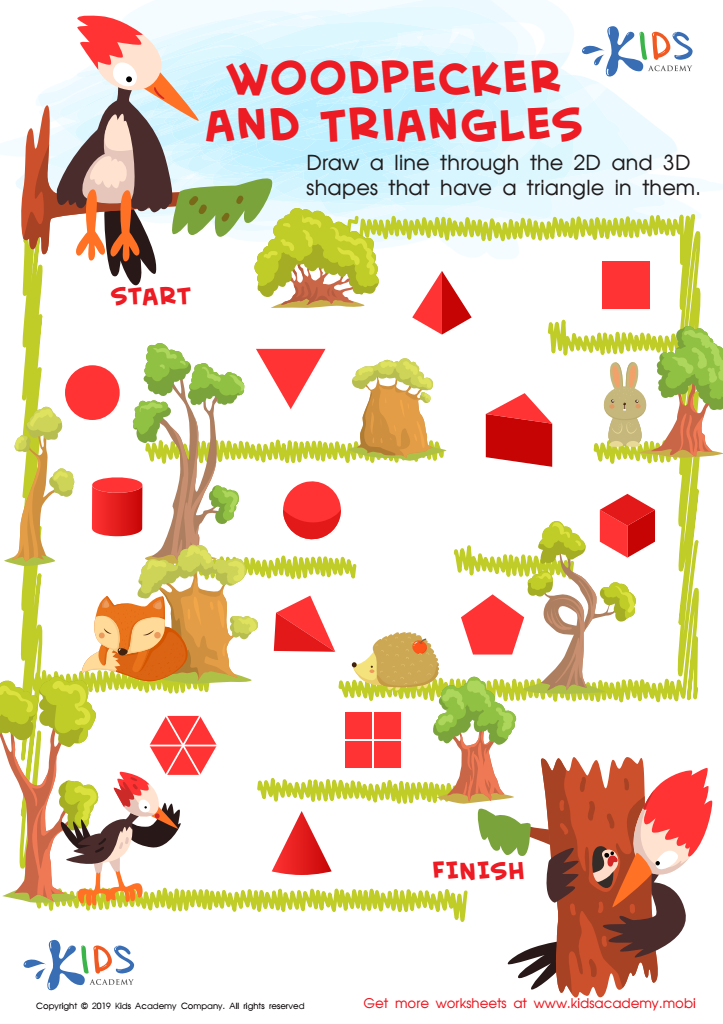

Woodpecker and Triangles Worksheet
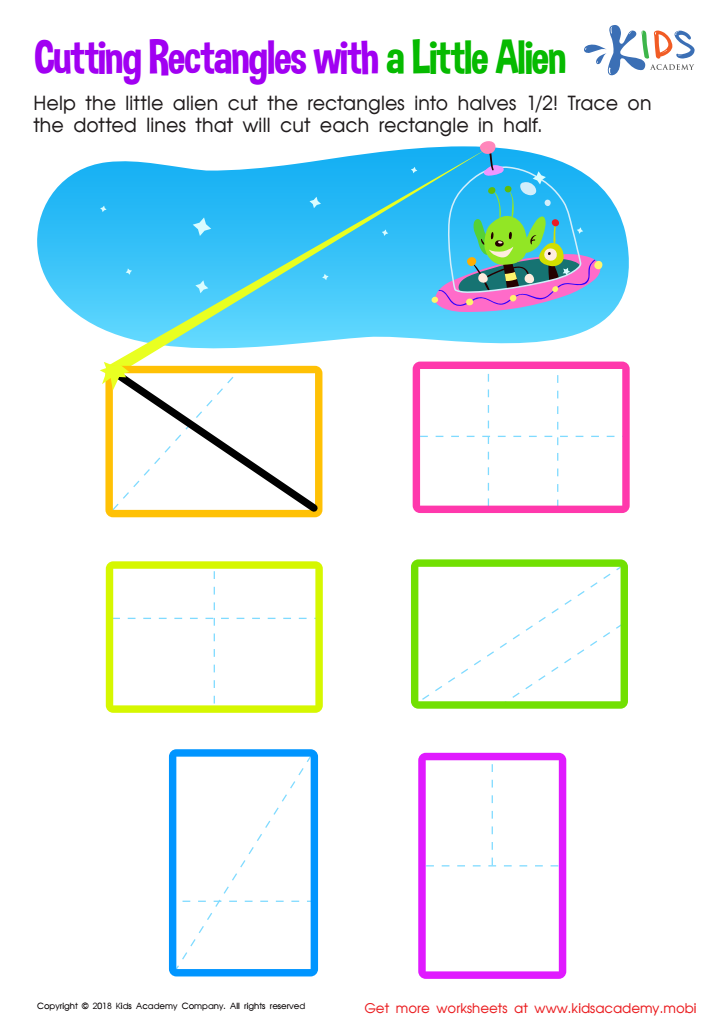

Cutting Rectangles with Alien Worksheet
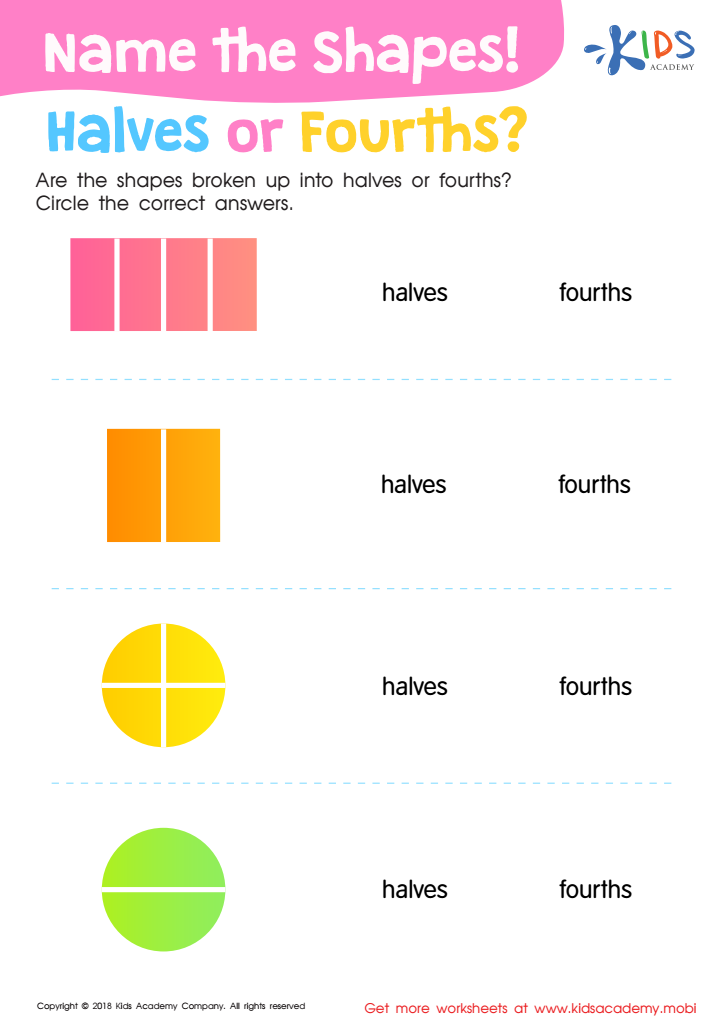

Name the Shapes Halves or Fourths? Worksheet


Shape Sorter Worksheet
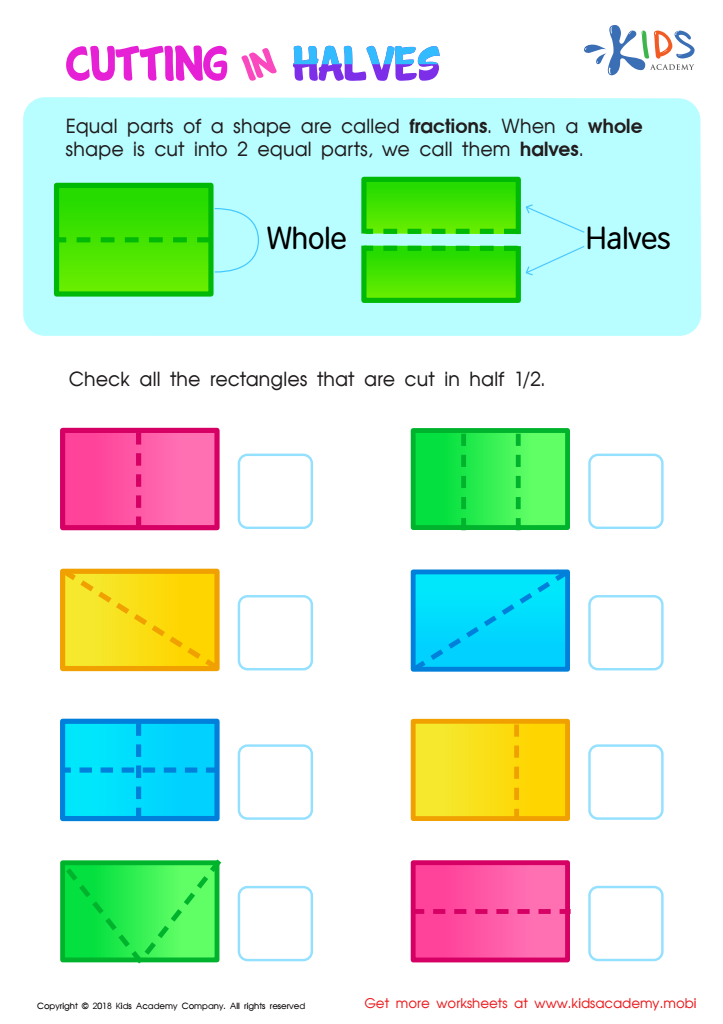

Cutting in Halves Worksheet
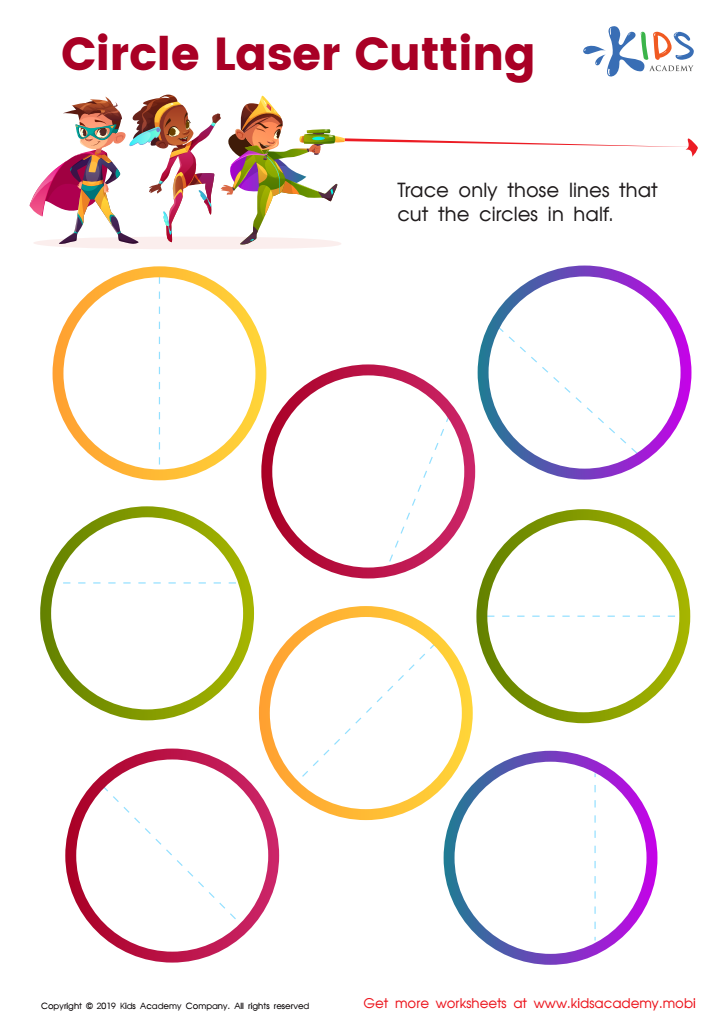

Circle Laser Cutting Worksheet
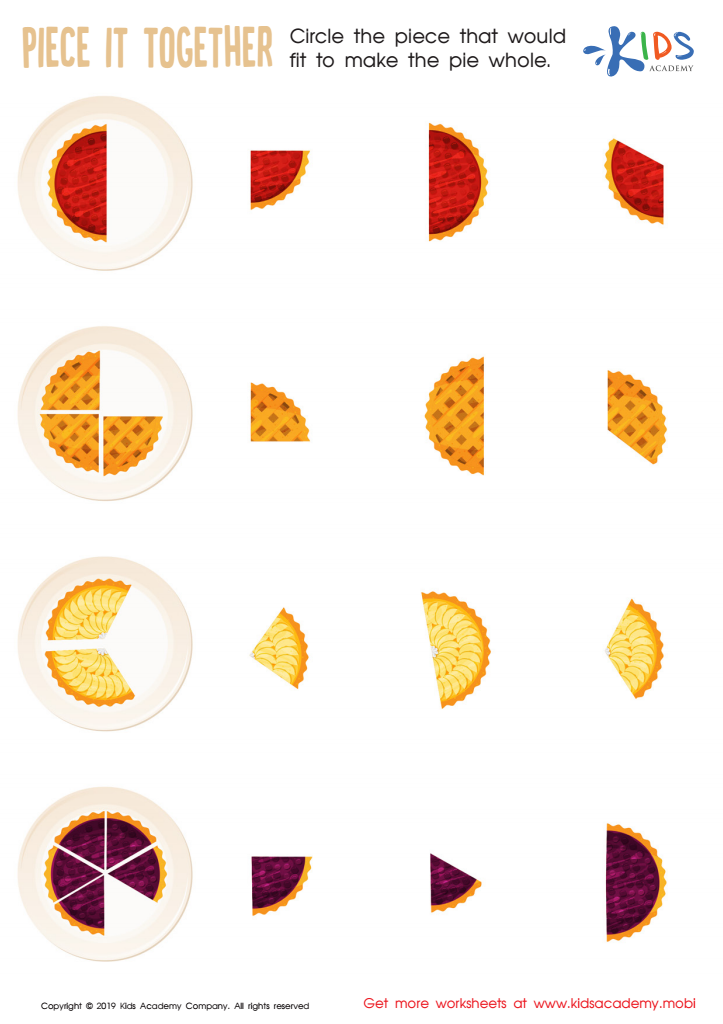

Piece it together Worksheet
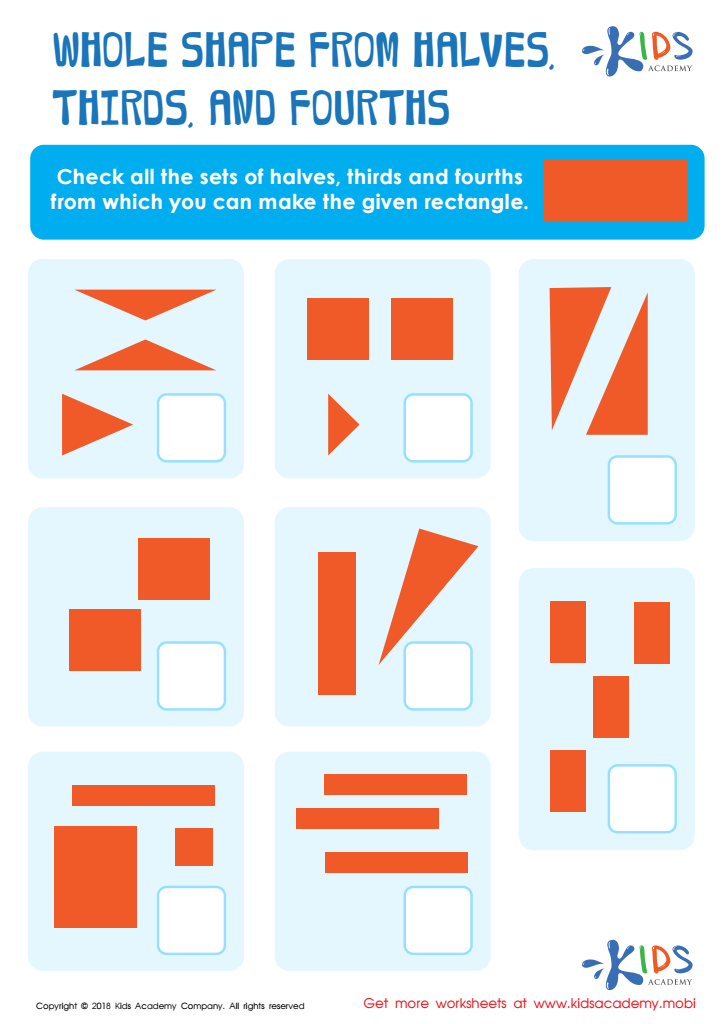

Whole Shape from Halves, Thirds and Fourths Worksheet
Shape recognition and understanding fractions of shapes are fundamental concepts for children aged 7-9, as they form the basis of mathematical reasoning and spatial awareness. At this developmental stage, children are increasingly able to comprehend and manipulate abstract ideas. Shape recognition helps them identify and categorize various geometric forms which are essential in everyday life, from reading maps to understanding architecture.
As children learn about fractions, recognizing parts of shapes is crucial. This knowledge not only aids in grasping more complex mathematical principles but also fosters logical thinking and problem-solving skills. When children can see that a circle divided into four equal parts operates with the same principles as a rectangle split into eighths, they are better equipped to understand fractions conceptually rather than memorizing them without context.
Moreover, these skills contribute to a child’s confidence in math, leading to a more positive attitude towards learning. Early exposure to these concepts primes children for future academic success, particularly in STEM fields. Therefore, parents and teachers should actively engage in activities that promote shape recognition and understanding of fractions, making learning both enjoyable and meaningful in a child’s formative years. Engaging with geometric shapes transforms math from abstract numbers into relatable concepts for children.
 Assign to My Students
Assign to My Students















